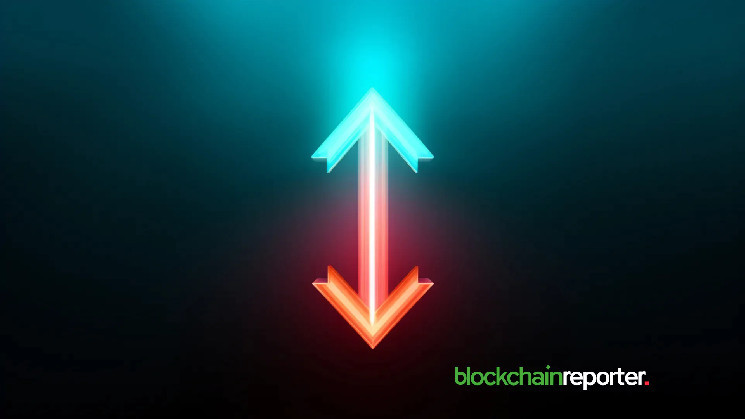
ZKsync is an Ethereum Layer-2 scaling solution that aims to enhance the efficiency and cost-effectiveness of Ethereum transactions by executing them off the main Ethereum chain. It does this through the use of zk-rollups, which group transactions together and process them off the main blockchain. Layer 2 solutions can be thought of as an additional freeway built alongside the crowded highway, allowing more transactions to drive on the main freeway (Ethereum). This additional lane shows the off-chain transaction handling that ZKsync performs with the help of zk-rollups.
How Does ZKsync Work?
The functioning of ZKsync starts from the accumulation of transactions with the help of zk-rollups. Instead of confirming separate transactions, ZKsync accumulates them and confirms the batch to reduce the pressure on the Ethereum main chain.
After this, ZKsync produces ZKPs in order to prove these batches. ZKPs allow the batches to have valid transactions in their batches. At the same time, it ensures that the details of the transactions are concealed. This can be as simple as being asked about certain things that only one with the password can answer without having to give the password.
ZK Token
ZKsync is a decentralized governance system, and the ZK token is crucial to it because it provides voting rights to its holders. To perform this power, users have to stake the ZK tokens to a ZKsync address, which can be their own or anyone else. The one who manages that address, called a Delegate, receives the right to vote on the proposals on the governance.
Most importantly, delegation does not transfer tokens. However, it only awakes the voting capabilities for the designated address. Delegation can be altered by the token holder at any time and stands until it is changed or the tokens are sold. The ZK token was launched on Binance on June 17, 2024 with a seed tag.
ZKsync Airdrop
ZKsync sold 17. 5% of the total ZK tokens to wallets and the contributors which participated in the airdrop. Users had to port their assets to ZKsync Era as well as satisfy conditions. These important conditions include invoking smart contracts, transacting through paymasters, trading ERC-20 tokens, providing liquidity, holding particular NFTs, or engaging in the ZKsync Lite platform.
The contribution-based airdrop also distributed tokens to different contributors within the ZKsync system. This involved direct grants for native projects developing on ZKsync Era, developers, GitHub contributors, and on-chain organizations.
How to Claim the ZKsync Airdrop
ZKsync is a decentralized governance system. while the ZK token is crucial to it because it provides voting rights to its holders. To perform this power, users have to stake the ZK tokens to a ZKsync address, which can be their own or anyone else’s. The one who manages that address, called a Delegate, receives the right to vote on the proposals on the governance. Most importantly, delegation does not transfer tokens but only awakes the voting capabilities for the designated address. Delegation can be altered by the token holder at any time and stands until it is changed or the tokens are sold. The ZK token was launched on Binance on June 17, 2024 with a seed tag.
Controversy Surrounds ZKsync Airdrop Execution
Currently, there has been uneasiness about the ZKsync airdrop regarding its fairness as well as the manner in which it was conducted. The airdrop is criticized for not having an efficient mechanism for preventing Sybil attack.
ZKsync vs. Optimistic Rollups
Optimistic rollups and ZKsync are two approaches to preserving the integrity of transactions and their settlement. Optimistic rollups expect all operations to be legitimate and count on nodes to validate transactions once executed. In case of problems, transactions are adjusted. This method can be influenced by human factor. On the other hand, while ZKsync employs ZKPs for transaction security, providing increased accuracy.
Regarding the time taken to settle, optimistic rollups have a 7-day challenge period to reverse questionable transactions, which leads to slow settlement times. ZKsync relies on ZKPs to verify transactions. In addition to this, the transactions are finalized upon successful verification, eliminating the challenge period and allowing for faster settlement.
Benefits of ZKsync
ZKsync utilizes zk-rollups to offload transactions from the main Ethereum network thus lowering the transaction fees and time taken. This makes it possible for Ethereum to accommodate more users and the decentralized applications (DApps). Also, since ZKsync is compatible with the Ethereum Virtual Machine (EVM), developers can easily switch their decentralized applications (DApps) to ZKsync without modifying its code too much.
Closing Thoughts
ZKsync employs zk-rollups and ZKPs to present a Layer-2 design that accelerates transactions and lessens costs on the Ethereum network. Thus, ZKsync is more secure than optimistic rollups and provides faster settlement. Additionally, the EVM integration makes the implementation of its scaling solutions easy for developers, which makes this technique a potential line of solving the problem of blockchain scalability.
